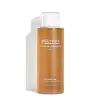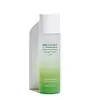What's inside
What's inside
 Key Ingredients
Key Ingredients

 Benefits
Benefits

 Concerns
Concerns

No concerns
 Ingredients Side-by-side
Ingredients Side-by-side

Water
Skin ConditioningGlycerin
HumectantPropanediol
SolventNiacinamide
SmoothingMethylpropanediol
Solvent1,2-Hexanediol
Skin ConditioningPolyglyceryl-10 Laurate
Skin ConditioningButylene Glycol
HumectantSodium Citrate
BufferingCitric Acid
BufferingAmmonium Acryloyldimethyltaurate/Vp Copolymer
Ethylhexylglycerin
Skin ConditioningCaramel
Cosmetic ColorantPolyquaternium-51
Skin ConditioningCamellia Sinensis Leaf Extract
AntimicrobialSodium Hyaluronate Crosspolymer
HumectantHydrolyzed Glycosaminoglycans
HumectantPhellinus Linteus Extract
Skin ConditioningSodium Hyaluronate
HumectantBenzyl Glycol
SolventHydrolyzed Hyaluronic Acid
HumectantCarum Petroselinum Extract
Skin ConditioningBrassica Oleracea Acephala Leaf Extract
HumectantAdansonia Digitata Seed Extract
Skin ConditioningMelaleuca Alternifolia Leaf Extract
PerfumingHouttuynia Cordata Extract
Skin ConditioningPinus Pinaster Leaf Extract
Skin ConditioningSprout Extract
AntioxidantMel Extract
MoisturisingLimus Extract
Skin ConditioningMacrocystis Pyrifera Extract
Skin ConditioningMentha Piperita Leaf Extract
Skin ConditioningActinidia Deliciosa Fruit Extract
Skin ConditioningAloe Ferox Leaf Extract
Skin ConditioningCentella Asiatica Extract
CleansingTerminalia Ferdinandiana Fruit Extract
AntioxidantCucumis Sativus Fruit Extract
EmollientRosa Alba Leaf Cell Extract
AntioxidantMorinda Citrifolia Fruit Extract
Skin ConditioningHyaluronic Acid
HumectantRaspberry Ketone
MaskingLimonene
PerfumingParfum
MaskingWater, Glycerin, Propanediol, Niacinamide, Methylpropanediol, 1,2-Hexanediol, Polyglyceryl-10 Laurate, Butylene Glycol, Sodium Citrate, Citric Acid, Ammonium Acryloyldimethyltaurate/Vp Copolymer, Ethylhexylglycerin, Caramel, Polyquaternium-51, Camellia Sinensis Leaf Extract, Sodium Hyaluronate Crosspolymer, Hydrolyzed Glycosaminoglycans, Phellinus Linteus Extract, Sodium Hyaluronate, Benzyl Glycol, Hydrolyzed Hyaluronic Acid, Carum Petroselinum Extract, Brassica Oleracea Acephala Leaf Extract, Adansonia Digitata Seed Extract, Melaleuca Alternifolia Leaf Extract, Houttuynia Cordata Extract, Pinus Pinaster Leaf Extract, Sprout Extract, Mel Extract, Limus Extract, Macrocystis Pyrifera Extract, Mentha Piperita Leaf Extract, Actinidia Deliciosa Fruit Extract, Aloe Ferox Leaf Extract, Centella Asiatica Extract, Terminalia Ferdinandiana Fruit Extract, Cucumis Sativus Fruit Extract, Rosa Alba Leaf Cell Extract, Morinda Citrifolia Fruit Extract, Hyaluronic Acid, Raspberry Ketone, Limonene, Parfum
Water
Skin ConditioningCamellia Sinensis Leaf Extract
AntimicrobialButylene Glycol
HumectantGlycerin
HumectantDiethoxyethyl Succinate
Solvent1,2-Hexanediol
Skin ConditioningPanthenol
Skin ConditioningBacillus Ferment
Skin ConditioningSodium Hyaluronate
HumectantBetaine
HumectantHydroxyethyl Acrylate/Sodium Acryloyldimethyl Taurate Copolymer
Emulsion StabilisingAcrylates/C10-30 Alkyl Acrylate Crosspolymer
Emulsion StabilisingTromethamine
BufferingEthylhexylglycerin
Skin ConditioningSorbitan Isostearate
EmulsifyingCaprylyl/Capryl Glucoside
CleansingWater, Camellia Sinensis Leaf Extract, Butylene Glycol, Glycerin, Diethoxyethyl Succinate, 1,2-Hexanediol, Panthenol, Bacillus Ferment, Sodium Hyaluronate, Betaine, Hydroxyethyl Acrylate/Sodium Acryloyldimethyl Taurate Copolymer, Acrylates/C10-30 Alkyl Acrylate Crosspolymer, Tromethamine, Ethylhexylglycerin, Sorbitan Isostearate, Caprylyl/Capryl Glucoside
Ingredients Explained
These ingredients are found in both products.
Ingredients higher up in an ingredient list are typically present in a larger amount.
1,2-Hexanediol is a synthetic liquid and another multi-functional powerhouse.
It is a:
- Humectant, drawing moisture into the skin
- Emollient, helping to soften skin
- Solvent, dispersing and stabilizing formulas
- Preservative booster, enhancing the antimicrobial activity of other preservatives
Butylene Glycol (or BG) is used within cosmetic products for a few different reasons:
Overall, Butylene Glycol is a safe and well-rounded ingredient that works well with other ingredients.
Though this ingredient works well with most skin types, some people with sensitive skin may experience a reaction such as allergic rashes, closed comedones, or itchiness.
Learn more about Butylene GlycolCamellia Sinensis Leaf Extract is derived from the leaves of the tea plant. Black tea, green tea, and oolong tea are all harvested from this plant.
This ingredient has many skin benefits:
This ingredient contains polyphenols, a strong antioxidant. Antioxidants help fight off molecules that damage skin cells.
On top of that, the antioxidants in green tea neutralize free-radicals from the sun. This gives the skin some extra UV protection, but should not replace sunscreen.
Many components of tea have anti-inflammatory properties.
Polyphenols and L-theanine help soothe the skin and reduce irritation. The caffeine in Camellia Sinensis Leaf Extract helps calm inflamed blood vessels.
Other compounds found in tea include: Vitamin Bs, linoleic acid, magnesium, calcium, iron, and zinc.
Research has shown both drinking Camellia Sinensis Leaf Tea and applying it to the skin can help boost skin elasticity and hydration. Studies also show using tea extract may reduce sebum, or oil, production.
Learn more about Camellia Sinensis Leaf ExtractEthylhexylglycerin (we can't pronounce this either) is commonly used as a preservative and skin softener. It is derived from glyceryl.
You might see Ethylhexylglycerin often paired with other preservatives such as phenoxyethanol. Ethylhexylglycerin has been found to increase the effectiveness of these other preservatives.
Glycerin is already naturally found in your skin. It helps moisturize and protect your skin.
A study from 2016 found glycerin to be more effective as a humectant than AHAs and hyaluronic acid.
As a humectant, it helps the skin stay hydrated by pulling moisture to your skin. The low molecular weight of glycerin allows it to pull moisture into the deeper layers of your skin.
Hydrated skin improves your skin barrier; Your skin barrier helps protect against irritants and bacteria.
Glycerin has also been found to have antimicrobial and antiviral properties. Due to these properties, glycerin is often used in wound and burn treatments.
In cosmetics, glycerin is usually derived from plants such as soybean or palm. However, it can also be sourced from animals, such as tallow or animal fat.
This ingredient is organic, colorless, odorless, and non-toxic.
Glycerin is the name for this ingredient in American English. British English uses Glycerol/Glycerine.
Learn more about GlycerinSodium Hyaluronate is hyaluronic acid's salt form. It is commonly derived from the sodium salt of hyaluronic acid.
Like hyaluronic acid, it is great at holding water and acts as a humectant. This makes it a great skin hydrating ingredient.
Sodium Hyaluronate is naturally occurring in our bodies and is mostly found in eye fluid and joints.
These are some other common types of Hyaluronic Acid:
Learn more about Sodium HyaluronateWater. It's the most common cosmetic ingredient of all. You'll usually see it at the top of ingredient lists, meaning that it makes up the largest part of the product.
So why is it so popular? Water most often acts as a solvent - this means that it helps dissolve other ingredients into the formulation.
You'll also recognize water as that liquid we all need to stay alive. If you see this, drink a glass of water. Stay hydrated!
Learn more about Water